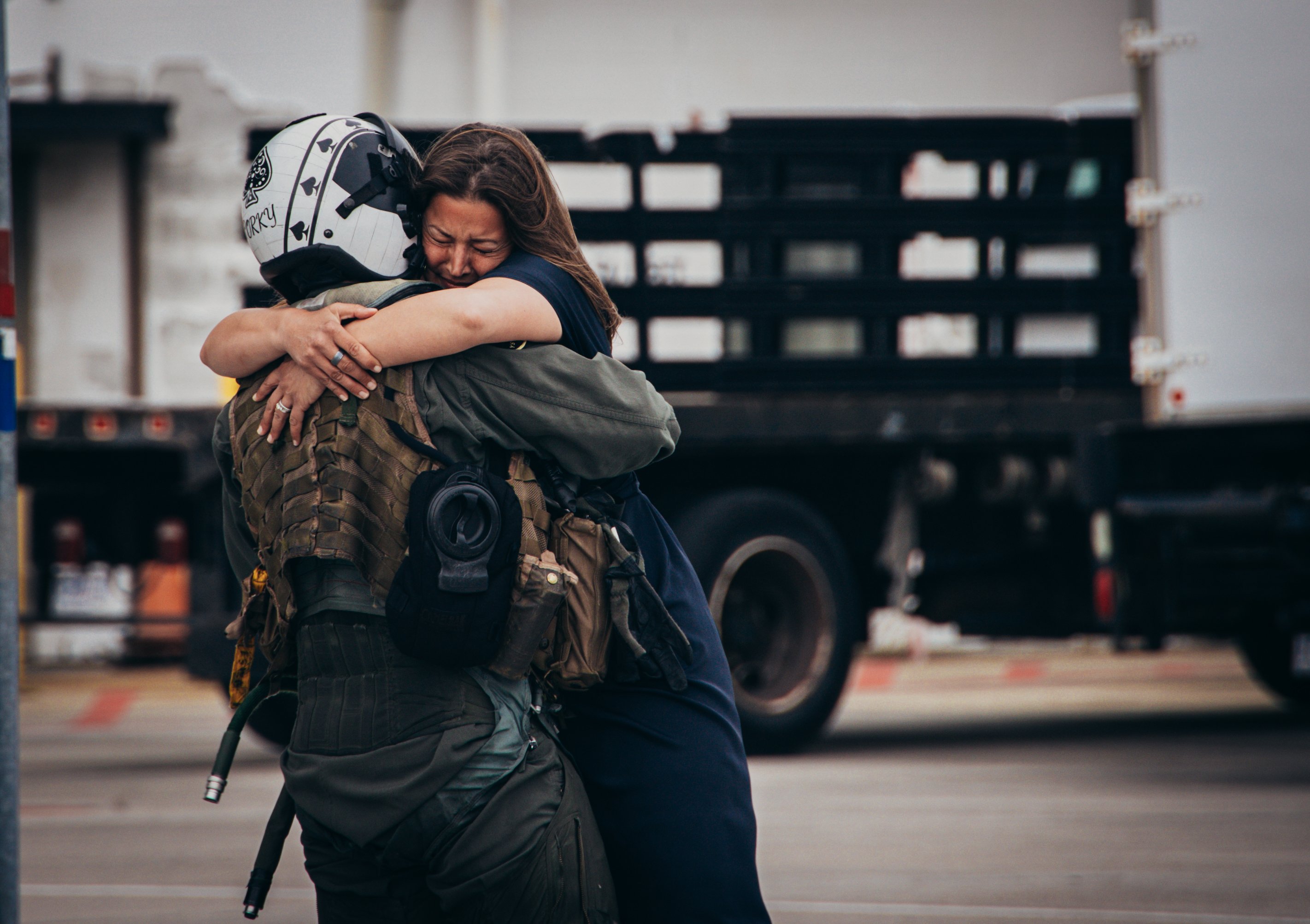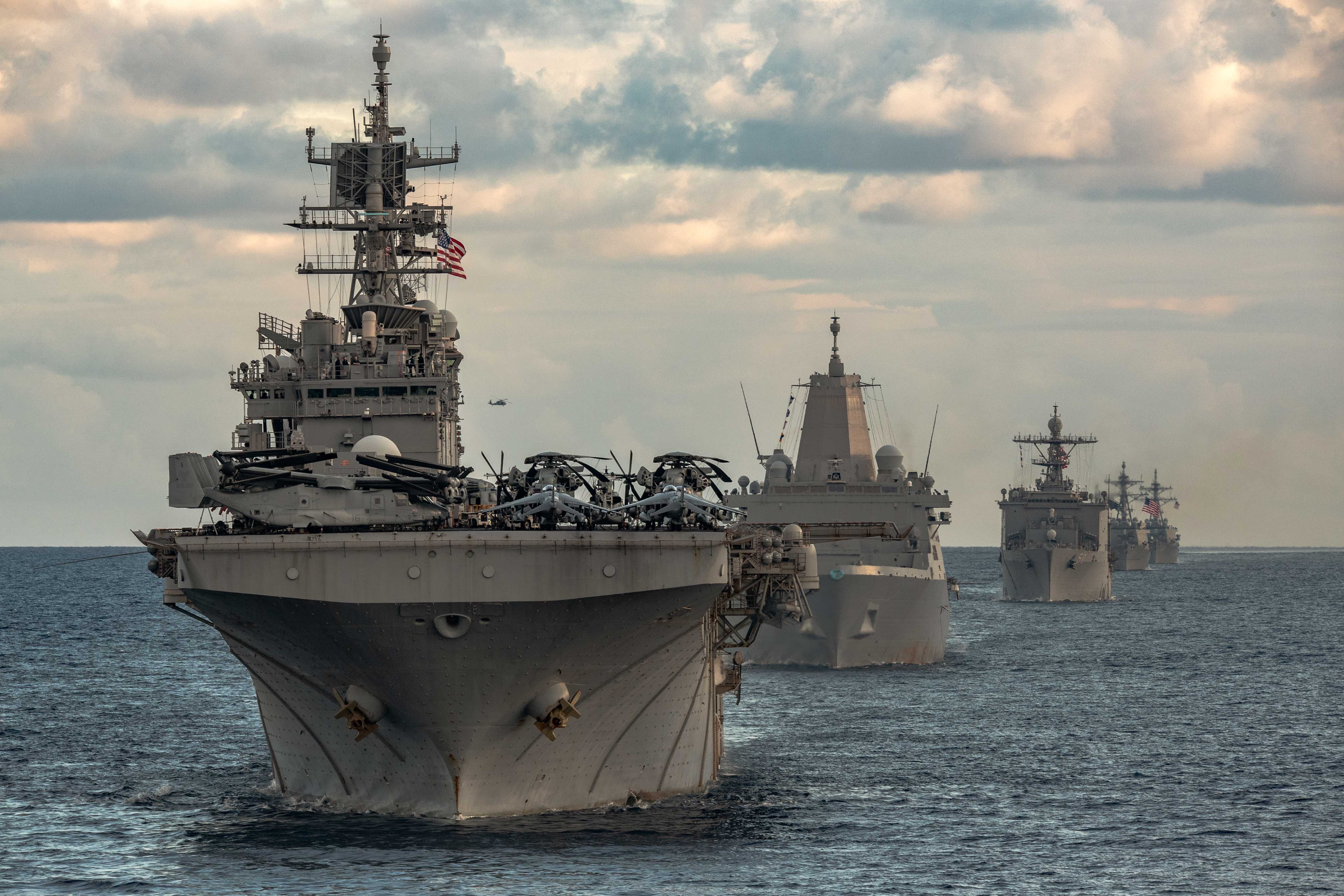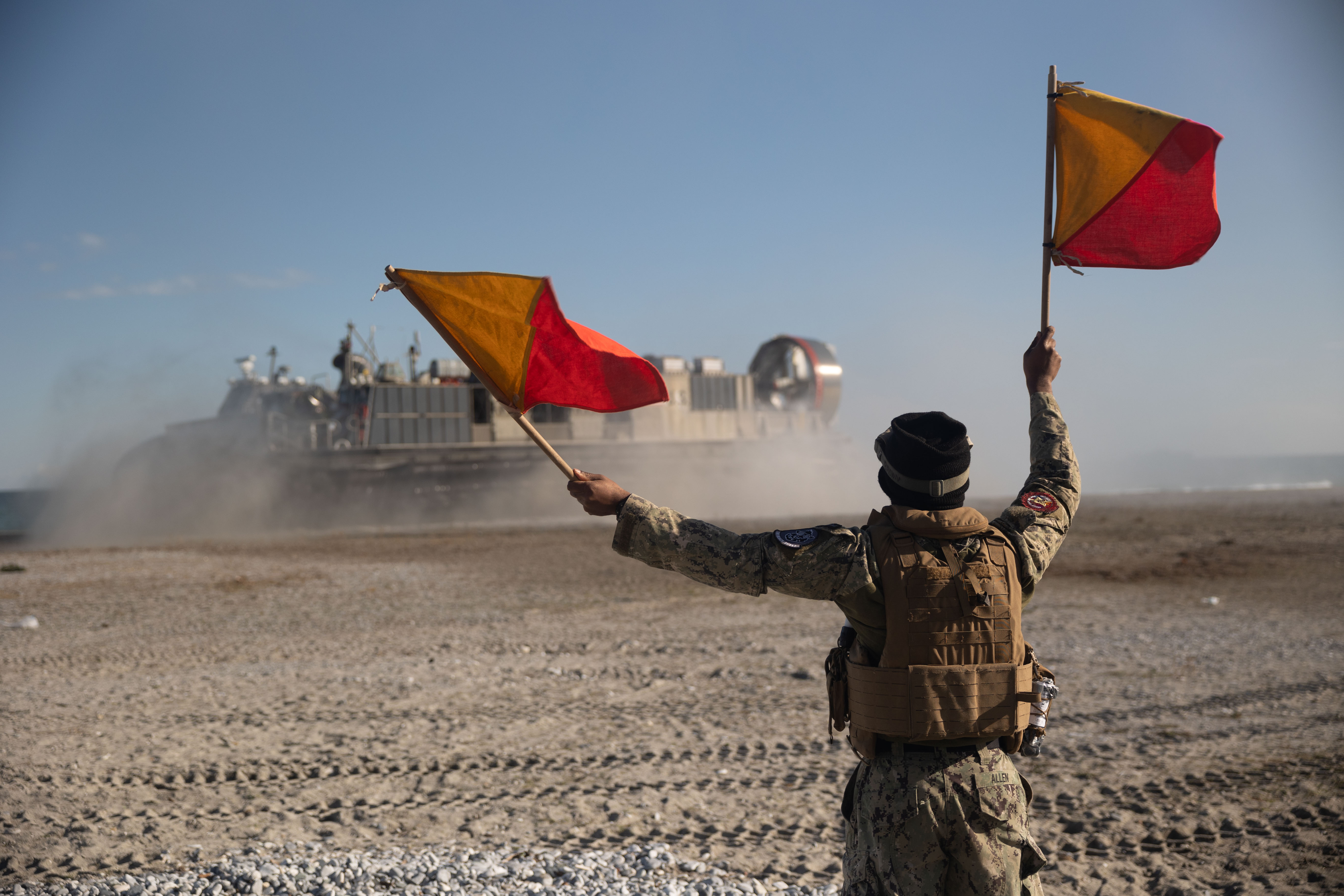
The Bataan Amphibious Ready Group and the 26th Marine Expeditionary Unit returned home to the East Coast on Saturday after more than eight months deployed to the Middle East and Mediterranean Sea.
The Bataan ARG – USS Bataan (LHD-5), USS Carter Hall (LSD-50) and USS Mesa Verde (LPD-19) – deployed in July, with Bataan and Mesa Verde leaving from Naval Station Norfolk, Va., while Carter Hall left from Joint Expeditionary Base Little Creek-Fort Story, Va.
“This deployment marked the first time a MEU with the Special Operations Capable designation has been employed in over two decades,” according to a Marine Corps news release. “While deployed, more than 4,000 Marines and sailors supported a wide range of interoperability training, exercises and operations within the U.S. 5th and 6th Fleet areas of operations; covering the High North, Baltic Sea, Eastern Mediterranean, Arabian Gulf, Red Sea, and Middle East.”
Over the weekend Marines and sailors with the 26th MEU’s Aviation Combat Element flew AV-8B Harriers from Bataan to Marine Corps Air Station Cherry Point, N.C., according to the release. It will be the last time the VMA-231 will deploy the AV-8B Harriers with a MEU, as they will transition to the F-35B Joint Strike Fighter Lightning II.
From Sunday through Tuesday, the Marines and sailors will return to Camp Lejeune in North Carolina. Aviators will fly off to Marine Corps Air State New River, N.C.
Over the course of its deployment, the Bataan ARG participated in U.S. missions to deter Iran from seizing ships in the Strait of Hormuz, discourage Houthi attacks in the Red Sea and, most recently, prepare for a possible noncombatant evacuation in the Eastern Mediterranean Sea.

The Bataan ARG left as a crisis-response force for U.S. Naval Forces Europe with elements of the 26th Marine Expeditionary Unit (Special Operations Capable) aboard. However, the ARG received redeployment orders for U.S. Central Command, where it was stationed to discourage the Iranian Navy and Iranian Revolutionary Guards Corps Navy from attempting to seize ships in the Strait of Hormuz.
Bataan and Carter Hall sailed into the Strait of Hormuz while Mesa Verde stayed in the Med.
During that time, a force of 100 Marines were prepared to board commercial ships to act as armed protection if needed, although that never came to fruition, USNI News previously reported.
After Hamas attacked southern Israel on Oct. 7, the U.S. moved Bataan and Carter Hall from the Persian Gulf to the Red Sea, with Mesa Verde remaining in the Mediterranean. The ships had initially planned to join Mesa Verde in the Med, USNI News reported at the time.
After five months in the Middle East, the two ships joined with Mesa Verde, with the Bataan ARG taking over the presence operations the Gerald R. Ford Carrier Strike Group was conducting in the Eastern Med.
The Dwight D. Eisenhower Carrier Strike Group deployed Oct. 14 from Norforlk, Va. It was initially going to head to the Mediterranean Sea, where it would relieve the Gerald R. Ford Carrier Strike Group. Instead, it was routed to U.S. Central Command following the Hamas attacks.
The Ford CSG sailed home in January, with the Dwight D. Eisenhower Carrier Strike Group staying in the Red Sea.
The Eisenhower CSG is still operating in the Red Sea, leaving the Med without a carrier strike group or ARG. The U.S. also went months without a carrier in the sea between the George W. Bush CSG and the Ford CSG.

When the Bataan ARG set out for its deployment, it was planning to take the Marine Corps’ new Amphibious Combat Vehicle for its first deployment. But the Marine Corps again delayed the first ACV deployment after the service rewrote the training regime. The service redid the training syllabus after a 2022 incident in which two ACVs were disabled and partially rolled over on the California coast’s heavy surf.
This was the second time the ACV rollout was delayed, with the initial plan for the ACVs to be aboard the Makin Island Amphibious Ready Group and the embarked 13th MEU.
The ACVs are set to deploy with the 15th MEU aboard the Boxer Amphibious Ready Group but USS Boxer (LHD-4) has yet to depart California, USNI News reported.
The Bataan ARG deployed with MV-22B Ospreys, which were grounded in December following a fatal crash in Japan.
However, the 26th MEU received special permission to use V-22s in emergency situations, under the premise that the Bataan ARG might be involved in noncombatant evacuations. However, the U.S. never ordered a non-combatant evacuation operation.
The 26th MEU relied on the Marine CH-53E Sea Stallion heavy-lift helicopters for day-to-day operations, USNI News reported.
The Navy lifted its grounding of V-22s on March 8.





